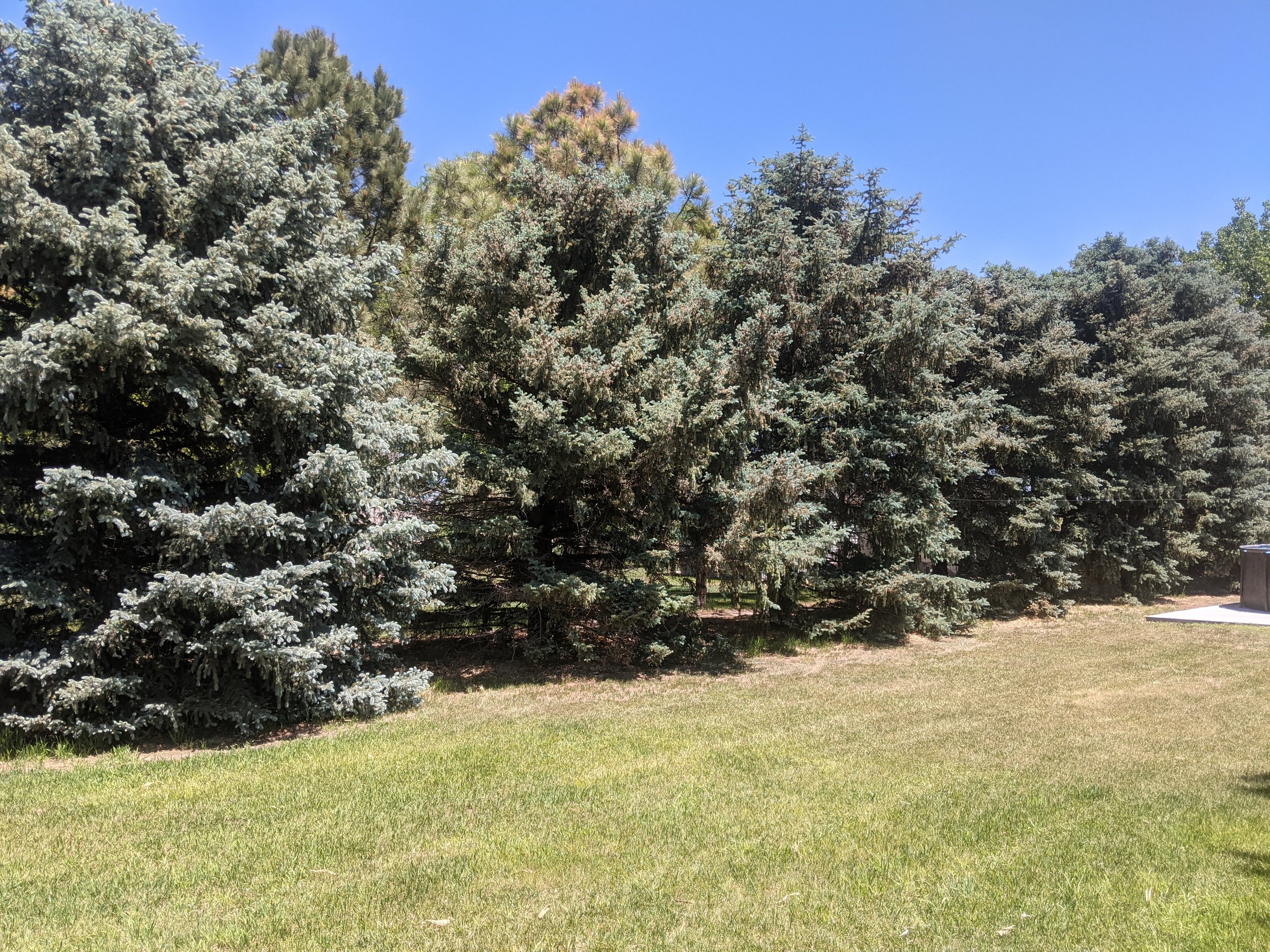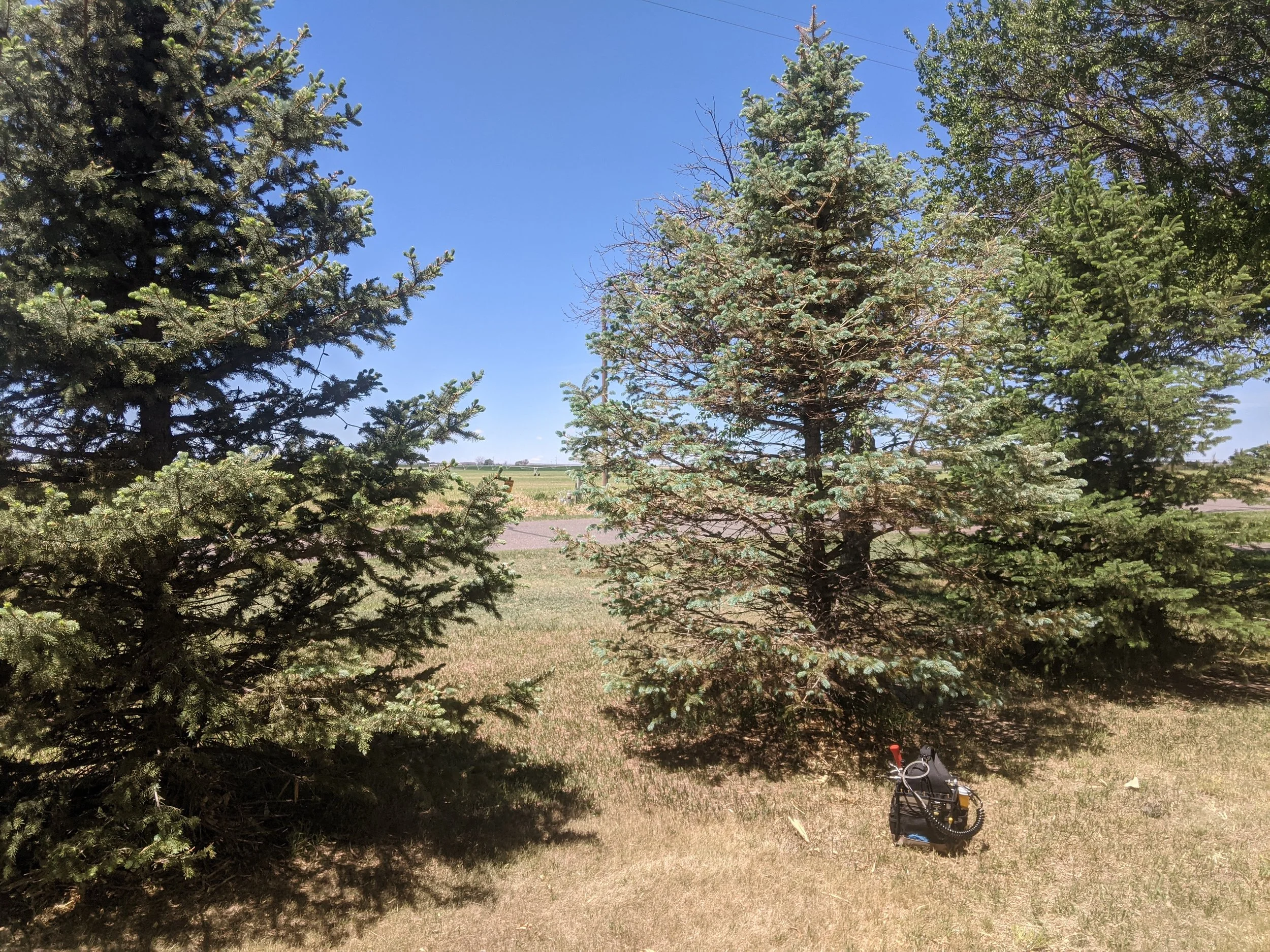
Ips Beetles, Mountain Pine Beetles, and Spruce Beetles
Conifer Bark Beetles
Identification
Identifying conifer bark beetles in your Pine and Spruce trees starts with checking the trunk for signs of sawdust, sap pitch, or woodpecker activity within the bark. Dieback in the tree tops or throughout the whole tree is usually a symptom that the tree is getting attacked by a bark beetle.
Managing Your Trees
The first step in preventing outbreaks of devastating beetles is to use practices on your property that promote vigorous tree growth. In most cases, these pests are a secondary issue to stresses such as drought, compaction, or construction damage to the root zone. It is also important to remove any freshly cut tree material from the property as some beetles are attracted to this for breeding grounds.
Steps that tree owners can take to help with the vigor of their conifer trees include:
Ensure your trees are receiving proper water during drought periods.
1” of rain per week in the growing season
OR 10 gallons of supplemental water per diameter inch of tree trunk each week
Try to water once a month during dry winters
Reduce soil compaction around the root zone of your trees
Be mindful of driving and heavy foot traffic near trees
How often does a riding mower compact the root zone?
Mitigate compaction
Aerate the root zones
Consider mulching the root zone
Seek an arborist for advice on construction projects around your trees
Preventive Insecticide
Even after taking all the DIY steps listed above, you may still want to consider a systemic injection of Emamectin Benzoate. When applied at the high labeled rate, this application will stay within the tree for 2 years or more. In many cases, the cost of this application outweighs the risk of losing a high-valued tree and paying for removal.
Injecting into Pine and Spruce trees can be difficult and time-consuming because of the resinous sap flows from conifers. Northeast Tree Care uses a formula with 10% active ingredient from Arbor-Jet instead of 4% to ensure the proper high labeled rate dosage is applied. We also have experience in managing the pressure of the application to ensure little to no chemical is leaked out of the injection sites, for the safest and most effective application possible.

